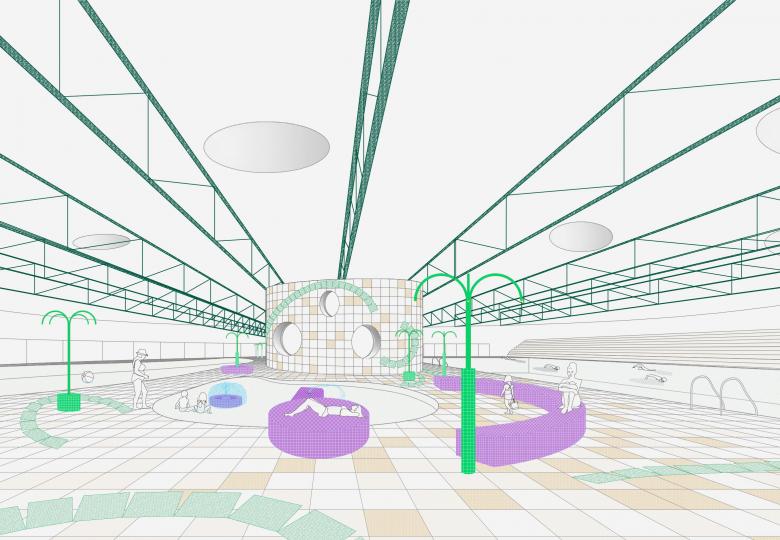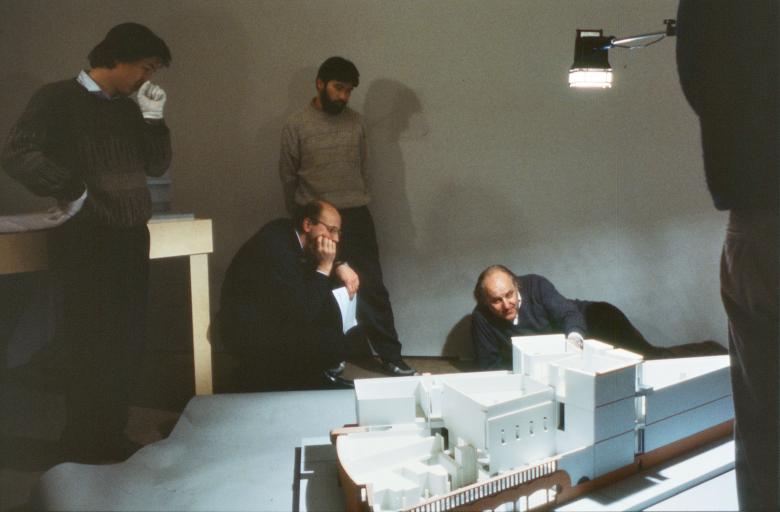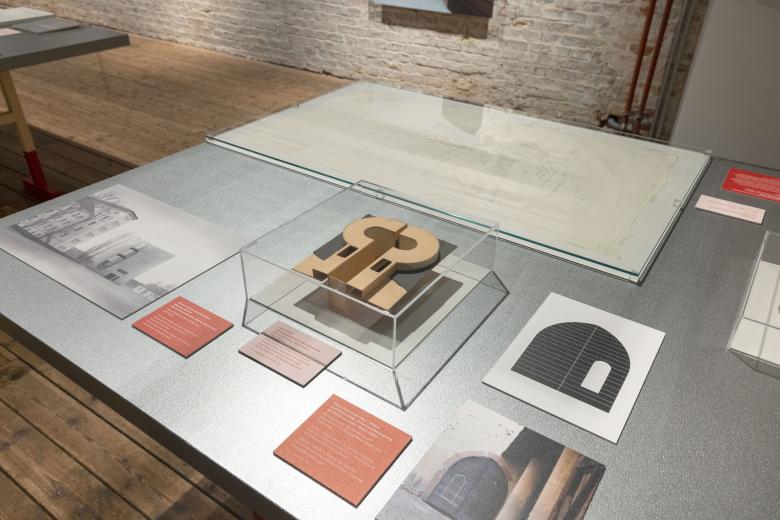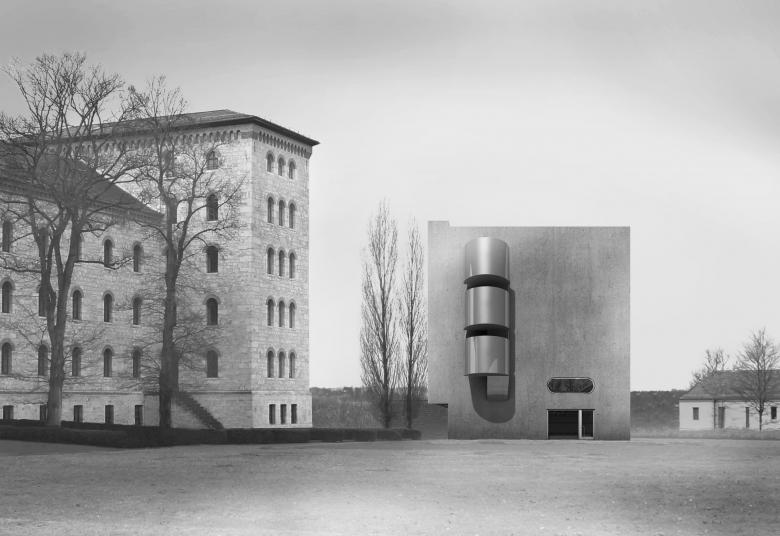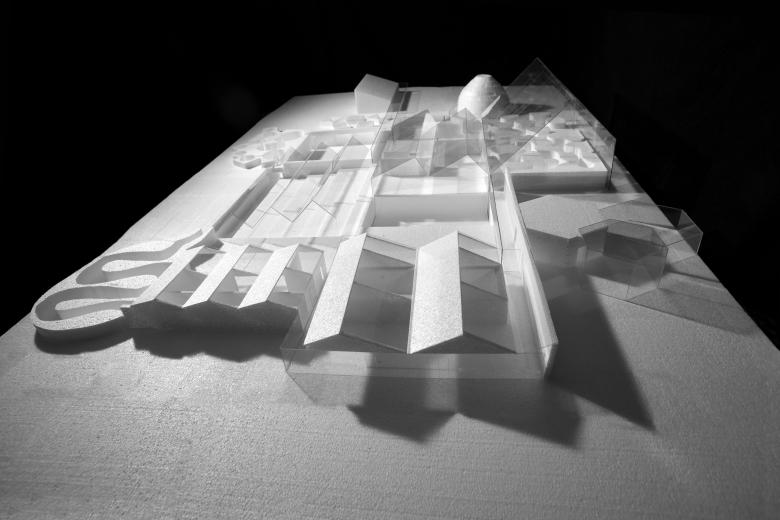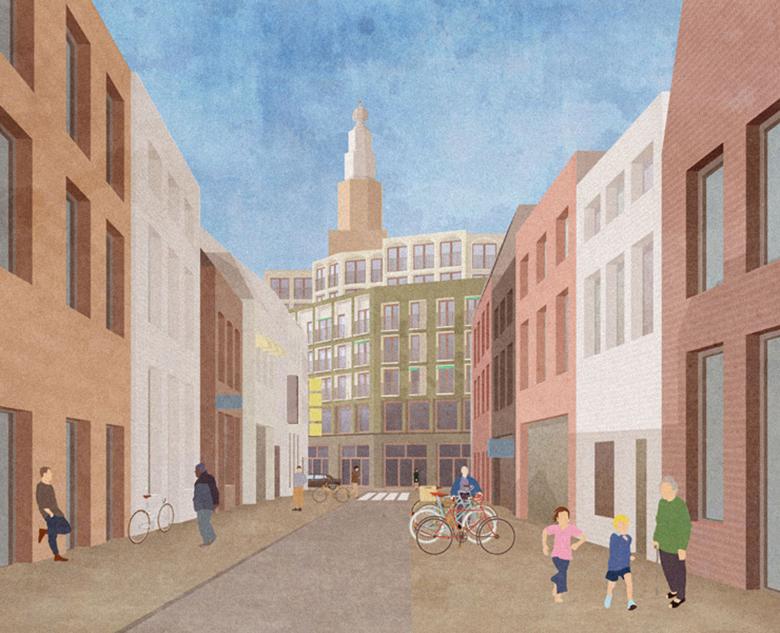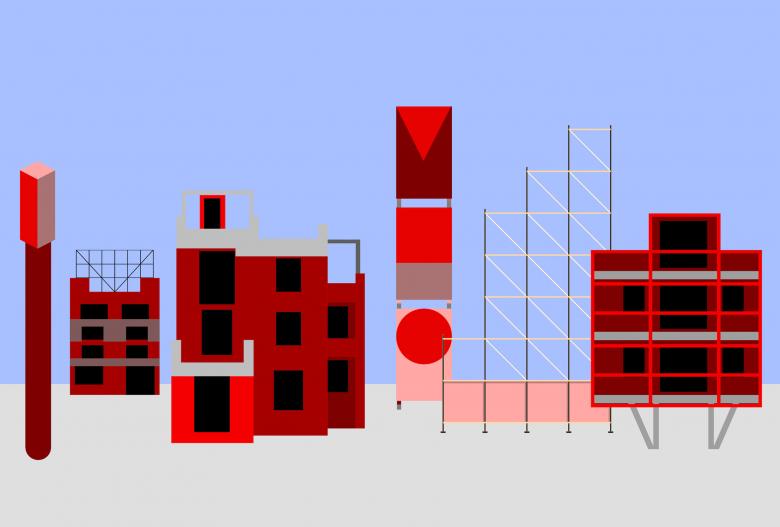6. November 2023
Doorzon: BALSANEO, Centre Aquatique Intercommunal Balsan’éo, Châteauroux, France, 2019. Study of the recreational pool with palm tree showers. (Image © Doorzon)
What significance does the work of the late Austrian architect Hans Hollein have for a younger generation of architects? The Architekturzentrum Wien (Az W) is juxtaposing Hollein's projects with the designs of fifteen European firms in Hollein Calling: Architectural Dialogues, a major exhibition on display until February 2024.
Installation view of Hollein Calling: Architectural Dialogues. (Photo © Reiner Riedler)
Hans Hollein (1934–2014) is an icon of Austrian architecture. Today, the 1960s avant-gardist and only Pritzker Prize from Austria is considered a pioneer of postmodern architecture. His designs, including the fabulous Retti Candle Shop in Vienna (1965), the Museum of Modern Art in Frankfurt am Main (1991), and the Haas House in Vienna (1990), made him world-famous — just like his "Everything is architecture" manifesto.
Hollein was a true universal talent, working as an architect, designer, and sculptor. A student of Clemens Holzmeister (1886–1983), Hollein was shaped by an enthusiasm for the United States and a fascination with spaceships and spacesuits, which he shared with so many of his contemporaries. Hollein was interested in self-sufficient, minimal spaces, as exemplified by his proposal for a mobile inflatable office. He also created widely acclaimed collages featuring technical objects in the landscape.
But what is the significance of Hollein's work for young architects who are shaping the European architectural discourse today? The Az W is exploring these exciting questions with Hollein Calling: Architectural Dialogues, which opened on September 21 and runs until February 12, 2024. In this way, the work of the master is to be reassessed.
Hans Hollein: Frankfurt Museum of Modern Art, Frankfurt am Main, Germany, 1982–1991. Hans Hollein and colleagues photographing the competition model. Archive Hans Hollein, Az W and MAK, Vienna. (Photo: Sina Baniahmad © Architekturzentrum Wien, Collection)
Hans Hollein: Retti Candle Shop, Kohlmarkt 8-10, 1010 Vienna, 1964–1965. Working model shop front. Archive Hans Hollein, Az W and MAK, Vienna. (Photo © Architekturzentrum Wien, Collection)
Installation view of Hollein Calling: Architectural Dialogues. (Photo © Reiner Riedler)
On display at the Az W are projects by Hollein, such as the aforementioned Retti Candle Shop and the equally small Schullin jewelry store, but also school buildings and museums from the Viennese architect — fifteen key Hollein projects in all. These are presented on the basis of sketches, models, prototypes and documents from the large Archive Hans Hollein, Az W and MAK, Vienna, which the Az W team has been processing for several years. Many of the exhibits have never been on public view before — this alone fuels anticipation and curiosity about the show.
These works are juxtaposed with projects by Almannai Fischer Architekt:innen (Munich), baukuh (Milan), Bovenbouw Architectuur (Antwerp), Claudia Cavallar (Vienna), Aslı Çiçek (Brussels), Conen Sigl Architekt:innen (Zurich), doorzon interieur architecten (Ghent), Expanded Design (Vienna), Martin Feiersinger (Vienna), David Kohn Architects (London), Kühn Malvezzi (Berlin), Lütjens Padmanabhan Architekt:innen (Zurich), Manthey Kula (Oslo), Monadnock (Rotterdam), and OFFICE Kersten Geers David Van Severen (Brussels).
Almannai Fischer Architekten: Hall of Residence, Weimar, Germany, 2017–2025. Rendering of east elevation, competition phase. (Image © Almannai Fischer Architekten)
Kuehn Malvezzi: Insectarium, Montreal, Canada, 2014–2022. With Pelletier De Fontenay, Jodoin Lamarre Pratte, Atelier Le Balto (landscape). Model from the competition stage. (Photo © Kuehn Malvezzi)
Expanded Design: Wunschmaschine Wohnanlage, Vienna, Austria, 2014–2016. Conceptual drawing, digital collage. (Image © Expanded Design, Andreas Rumpfhuber)
When viewing the above list, it is apparent that some offices were probably selected because their designs show obvious references to Hollein; others have less direct common ground; and others still offer contradictions to Hollein's positions. It will be exciting to see to what extent the means of an architecture exhibition will succeed in elaborating more than formal similarities and differences and in penetrating to the level of attitude. It will be interesting to see what parallels emerge between the discourse of the 1960s and 1970s and that of today. For example, projects such as Hollein's Mobile Office (1969) can be read in the context of a growing awareness of environmental destruction — an awareness that was emerging at that time.
